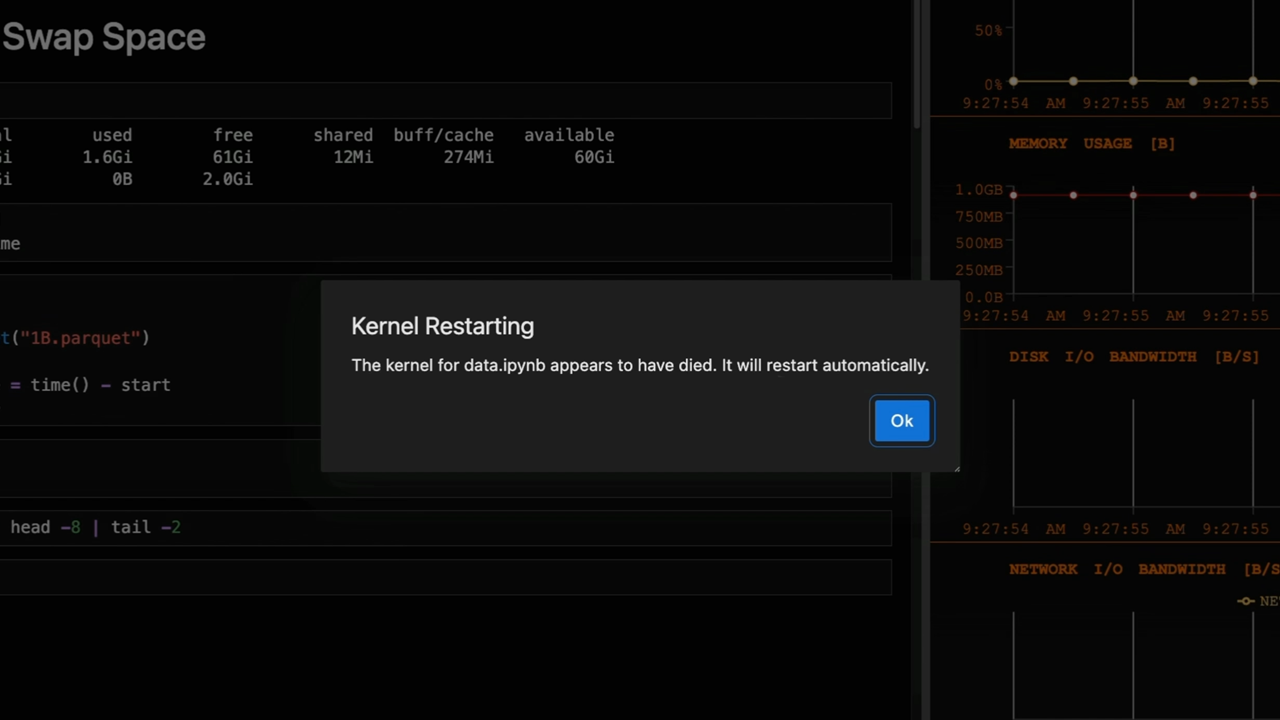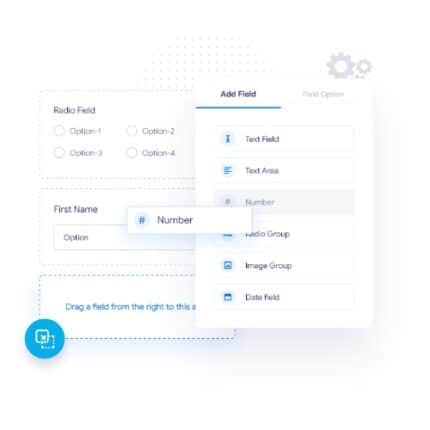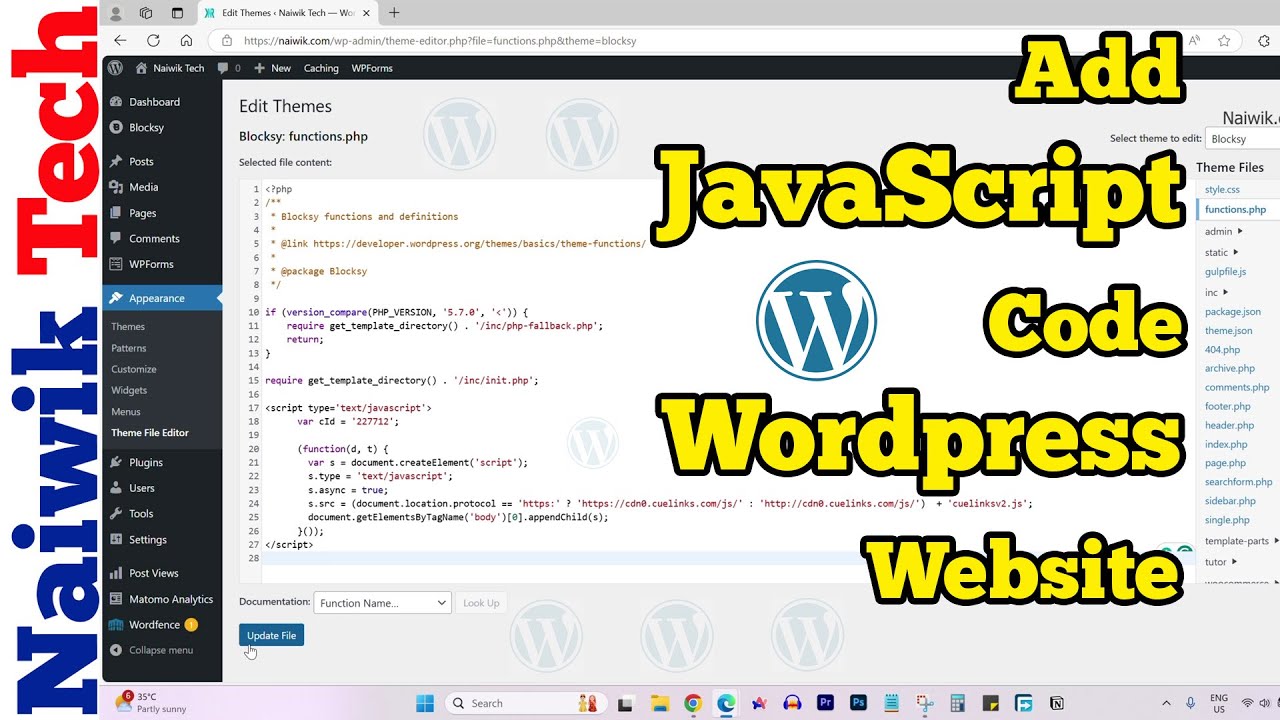Blog
How to Spot (and Fix) 5 Common Performance Bottlenecks in pandas Workflows

Identifying and Resolving Common Performance Bottlenecks in Pandas Workflows
Pandas is an invaluable tool for data analysis and manipulation in Python. However, as datasets grow in size and complexity, you may start to encounter performance bottlenecks in your workflows. In this guide, we’ll explore five common performance issues you may face when using Pandas and how to address them effectively.
Understanding Performance Bottlenecks in Pandas
Performance bottlenecks refer to specific parts of a process that slow down the overall execution time. These issues can arise from various factors, such as inefficient code practices, the size of the datasets, or inadequate hardware resources. Identifying these bottlenecks early on is essential for enhancing the efficiency of your data workflows.
1. Inefficient Data Loading
The Problem
Data loading can be a significant performance hurdle, especially with large datasets. If you’re using functions like read_csv(), loading time can drastically increase if you don’t optimize the read process.
The Solution
Several techniques can help streamline data loading:
-
Use Specific Data Types: By specifying data types during the loading process, you can significantly reduce memory usage. For instance, using
float32instead offloat64orcategoryfor categorical data can speed things up. -
Load Only Necessary Columns: If you’re only interested in specific columns, utilize the
usecolsparameter to load only what you need. - Chunking: For extremely large files, consider reading the data in chunks using the
chunksizeparameter. This method allows you to process the file in manageable segments without overwhelming your memory resources.
2. Unoptimized Data Filtering
The Problem
Filtering datasets can become slow, especially with large DataFrames and complex conditions.
The Solution
To enhance filtering performance, consider the following strategies:
-
Boolean Indexing: Use boolean masks to filter DataFrames instead of iterating through rows. This method is more efficient and can reduce execution time.
-
Utilize
.query(): Pandas provides a.query()method that allows for more readable and potentially faster filtering. This method is especially useful for more complex conditions. - Set Indexes: If you frequently filter based on certain columns, setting an index can speed up repeated queries. Use the
set_index()method to designate a column as the index, enhancing lookup speed.
3. Slow Data Aggregation
The Problem
Data aggregation operations, such as group by or pivot tables, can turn laborious if executed without proper optimization.
The Solution
Consider these optimization techniques for faster aggregations:
-
Use Built-in Aggregation Functions: Instead of applying custom functions with
.apply(), try to use built-in functions like.sum(),.mean(), etc., as they are optimized for performance. -
GroupBy Efficiency: When using
groupby(), ensure that you’re only aggregating necessary columns. This practice minimizes the computation required during aggregation. - Cython and Numba: If you require custom aggregation functions, consider using Cython or Numba to compile Python code into machine code, dramatically increasing performance compared to pure Python functions.
4. Memory Inefficiency
The Problem
Pandas DataFrames can consume significant memory, especially with large datasets, leading to slow performance and even crashes.
The Solution
To alleviate memory stress, you can implement these strategies:
-
Downcasting Numeric Types: Utilize Pandas’
pd.to_numeric()with thedowncastoption to convert numeric data to the smallest type possible, which can free up substantial memory. -
Removing Unused Data: If there are columns that aren’t required for analysis, drop them using the
drop()method. This simple step can reduce memory usage. - Garbage Collection: Regularly invoke Python’s garbage collection, particularly after removing large DataFrames, by using the
gc.collect()command. This action can help reclaim memory.
5. Inefficient Merges and Joins
The Problem
Combining multiple DataFrames through merges or joins can lead to slowdowns, particularly if the DataFrames are large.
The Solution
Here are methods to optimize your merge and join operations:
-
Indexing: Similar to filtering, setting an index on the columns you’re merging on can speed up the merge process. This optimization helps Pandas efficiently align rows.
-
Using
merge()with Suffixes: Prevent ambiguity by using thesuffixesargument, which can facilitate clarity and potentially speed up the merging process. - Choosing the Right Merge Type: Depending on the task, evaluate whether you really need an outer join. Inner joins can often be faster and what’s needed for analysis.
Monitoring and Profiling Your Workflows
To efficiently resolve performance bottlenecks, it’s also crucial to monitor your workflows and measure their execution time. Use Python’s built-in libraries, such as time and timeit, to track function execution and identify slow segments.
In addition, consider using profiling tools such as cProfile or line_profiler to assess which parts of your code are consuming the most time and resources. Profiling provides a clearer picture of where to focus your optimization efforts.
Conclusion
By identifying and fixing these common performance bottlenecks in your Pandas workflows, you can significantly improve speed and efficiency. Focusing on data loading, filtering, aggregation, memory management, and merging strategies will allow your data operations to run smoothly and efficiently. Armed with these techniques, you’ll be better prepared to handle even the most complex data challenges. Embrace these optimizations, and watch your Pandas workflows transform into a more effective tool for analysis.
Elementor Pro
In stock
PixelYourSite Pro
In stock
Rank Math Pro
In stock
Related posts
Building a WordPress Plugin | Jon learns to code with AI
How to add custom Javascript code to WordPress website
6 Best FREE WordPress Contact Form Plugins In 2025!
Solve Puzzles to Silence Alarms and Boost Alertness
Conheça AI do WordPress para construção de sites
WordPress vs Shopify: The Ultimate Comparison for Online Store Owners | Shopify Tutorial
Apple Ends iCloud Support for iOS 10, macOS Sierra on Sept 15, 2025
How to Speed up WordPress Website using AI 🔥(RapidLoad AI Plugin Review)
Bringing AI Agents Into Any UI: The AG-UI Protocol for Real-Time, Structured Agent–Frontend Streams
Web Hosting vs WordPress Web Hosting | The Difference May Break Your Site
Google Lays Off 200+ AI Contractors Amid Unionization Disputes
MIT’s LEGO: A Compiler for AI Chips that Auto-Generates Fast, Efficient Spatial Accelerators
Products
-
 Rayzi : Live streaming, PK Battel, Multi Live, Voice Chat Room, Beauty Filter with Admin Panel
Rayzi : Live streaming, PK Battel, Multi Live, Voice Chat Room, Beauty Filter with Admin Panel
$98.40Original price was: $98.40.$34.44Current price is: $34.44.In stock
-
 Team Showcase – WordPress Plugin
Team Showcase – WordPress Plugin
$53.71Original price was: $53.71.$4.02Current price is: $4.02.In stock
-
 ChatBot for WooCommerce – Retargeting, Exit Intent, Abandoned Cart, Facebook Live Chat – WoowBot
ChatBot for WooCommerce – Retargeting, Exit Intent, Abandoned Cart, Facebook Live Chat – WoowBot
$53.71Original price was: $53.71.$4.02Current price is: $4.02.In stock
-
 FOX – Currency Switcher Professional for WooCommerce
FOX – Currency Switcher Professional for WooCommerce
$41.00Original price was: $41.00.$4.02Current price is: $4.02.In stock
-
 WooCommerce Attach Me!
WooCommerce Attach Me!
$41.00Original price was: $41.00.$4.02Current price is: $4.02.In stock
-
 Magic Post Thumbnail Pro
Magic Post Thumbnail Pro
$53.71Original price was: $53.71.$3.69Current price is: $3.69.In stock
-
 Bus Ticket Booking with Seat Reservation PRO
Bus Ticket Booking with Seat Reservation PRO
$53.71Original price was: $53.71.$4.02Current price is: $4.02.In stock
-
 GiveWP + Addons
GiveWP + Addons
$53.71Original price was: $53.71.$3.85Current price is: $3.85.In stock
-
 JetBlog – Blogging Package for Elementor Page Builder
JetBlog – Blogging Package for Elementor Page Builder
$53.71Original price was: $53.71.$4.02Current price is: $4.02.In stock
-
 ACF Views Pro
ACF Views Pro
$62.73Original price was: $62.73.$3.94Current price is: $3.94.In stock
-
 Kadence Theme Pro
Kadence Theme Pro
$53.71Original price was: $53.71.$3.69Current price is: $3.69.In stock
-
 LoginPress Pro
LoginPress Pro
$53.71Original price was: $53.71.$4.02Current price is: $4.02.In stock
-
 ElementsKit – Addons for Elementor
ElementsKit – Addons for Elementor
$53.71Original price was: $53.71.$4.02Current price is: $4.02.In stock
-
 CartBounty Pro – Save and recover abandoned carts for WooCommerce
CartBounty Pro – Save and recover abandoned carts for WooCommerce
$53.71Original price was: $53.71.$3.94Current price is: $3.94.In stock
-
 Checkout Field Editor and Manager for WooCommerce Pro
Checkout Field Editor and Manager for WooCommerce Pro
$53.71Original price was: $53.71.$3.94Current price is: $3.94.In stock
-
 Social Auto Poster
Social Auto Poster
$53.71Original price was: $53.71.$3.94Current price is: $3.94.In stock
-
 Vitepos Pro
Vitepos Pro
$53.71Original price was: $53.71.$12.30Current price is: $12.30.In stock
-
 Digits : WordPress Mobile Number Signup and Login
Digits : WordPress Mobile Number Signup and Login
$53.71Original price was: $53.71.$3.94Current price is: $3.94.In stock
-
 JetEngine For Elementor
JetEngine For Elementor
$53.71Original price was: $53.71.$3.94Current price is: $3.94.In stock
-
 BookingPress Pro – Appointment Booking plugin
BookingPress Pro – Appointment Booking plugin
$53.71Original price was: $53.71.$3.94Current price is: $3.94.In stock
-
 Polylang Pro
Polylang Pro
$53.71Original price was: $53.71.$3.94Current price is: $3.94.In stock
-
 All-in-One WP Migration Unlimited Extension
All-in-One WP Migration Unlimited Extension
$53.71Original price was: $53.71.$3.94Current price is: $3.94.In stock
-
 Slider Revolution Responsive WordPress Plugin
Slider Revolution Responsive WordPress Plugin
$53.71Original price was: $53.71.$4.51Current price is: $4.51.In stock
-
 Advanced Custom Fields (ACF) Pro
Advanced Custom Fields (ACF) Pro
$53.71Original price was: $53.71.$3.94Current price is: $3.94.In stock
-
 Gillion | Multi-Concept Blog/Magazine & Shop WordPress AMP Theme
Rated 4.60 out of 5
Gillion | Multi-Concept Blog/Magazine & Shop WordPress AMP Theme
Rated 4.60 out of 5$53.71Original price was: $53.71.$5.00Current price is: $5.00.In stock
-
 Eidmart | Digital Marketplace WordPress Theme
Rated 4.70 out of 5
Eidmart | Digital Marketplace WordPress Theme
Rated 4.70 out of 5$53.71Original price was: $53.71.$5.00Current price is: $5.00.In stock
-
 Phox - Hosting WordPress & WHMCS Theme
Rated 4.89 out of 5
Phox - Hosting WordPress & WHMCS Theme
Rated 4.89 out of 5$53.71Original price was: $53.71.$5.17Current price is: $5.17.In stock
-
 Cuinare - Multivendor Restaurant WordPress Theme
Rated 4.14 out of 5
Cuinare - Multivendor Restaurant WordPress Theme
Rated 4.14 out of 5$53.71Original price was: $53.71.$5.17Current price is: $5.17.In stock
-
 Eikra - Education WordPress Theme
Rated 4.60 out of 5
Eikra - Education WordPress Theme
Rated 4.60 out of 5$62.73Original price was: $62.73.$5.08Current price is: $5.08.In stock
-
 Tripgo - Tour Booking WordPress Theme
Rated 5.00 out of 5
Tripgo - Tour Booking WordPress Theme
Rated 5.00 out of 5$53.71Original price was: $53.71.$4.76Current price is: $4.76.In stock

















